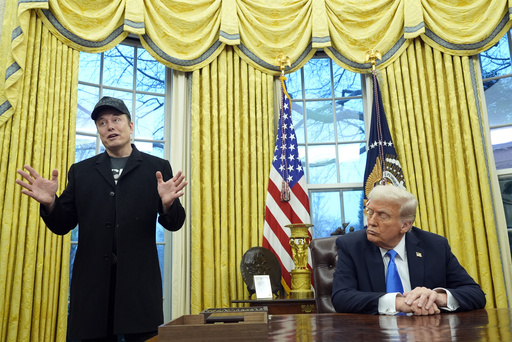Thousands of federal employees have found themselves jobless in the month following the beginning of President Donald Trump’s administration. The White House, along with the Department of Government Efficiency, has dismissed both newly hired and long-term career workers while instructing agency leaders to brace for significant workforce reductions. Moreover, there is a freeze on federal grant money, amounting to trillions of dollars, which is impacting employees across the country.
The fallout from these decisions extends beyond Washington, D.C., where around 20% of the civilian federal workforce, totaling 2.4 million individuals (excluding military and postal staff), operates. Notably, over 80% of federal workers reside outside of the capital area. However, an official count of those laid off or terminated has yet to be released. Information on how various agencies and employees are coping with the administration’s cuts has emerged through aggregated reports, statements from lawmakers, and union communications.
One notable initiative from the administration was a “deferred resignation” plan, offering financial incentives, such as extended paid leave, to nearly all federal employees willing to resign by February 6. Just before the deadline, a federal judge intervened to block the program, stating that arguments from both the government and labor unions—who decried the offer as illegal—needed to be considered. By February 12, around 75,000 employees had accepted the proposal despite the legal concerns.
Layoffs have also targeted probationary workers—those employed for less than a year without full civil service protections—affecting potentially hundreds of thousands. On February 13, a directive from the administration instructed various agencies to terminate nearly all of these employees. Records from the Office of Personnel Management indicated that 220,000 federal employees fell into this category as of March 2024.
In a significant move, the Department of Veterans Affairs announced on February 13 it was firing over 1,000 employees who had been with the agency for less than two years. Senators have indicated this workforce included crucial research personnel involved in areas such as cancer treatment and opioid addiction.
The Defense Department outlined plans to lay off 5,400 probationary employees and implement a hiring freeze, excluding uniformed military personnel. It expects a 5% to 8% reduction in its civilian workforce, which numbers over 700,000 full-time workers, making it the largest agency in the federal government.
The Education Department has also seen reductions with at least 39 firings, including specialists focused on special education and student aid, amid nearly $900 million in cuts to its Institute of Education Services, jeopardizing the tracking of student progress. Simultaneously, hundreds of employees in nuclear weapons program roles were laid off by the Energy Department, although this decision was swiftly reversed for many of the affected individuals within hours of their termination.
Health and Human Services faced potential layoffs for over 5,000 probationary personnel, with the Centers for Disease Control and Prevention originally targeting approximately 1,300 but ultimately reducing this count to around 700. Other public health agencies, such as the National Institutes of Health and FDA, also experienced probationary cuts, although final numbers remain unpublished.
At the Department of Homeland Security, 405 probationary staff were released, with significant cuts occurring within the Federal Emergency Management Agency. Furthermore, the Cybersecurity & Infrastructure Security Agency identified over 130 job losses, and smaller layoffs occurred across multiple divisions.
The Internal Revenue Service announced plans to lay off thousands of probationary workers in the midst of tax season, although specifics about the number remain uncertain. The National Park Service recently terminated approximately 1,000 newly hired personnel responsible for maintaining parks and visitor services, although wraps around these terminations continue to be clarified by congressional members.
In administrative changes, the Consumer Financial Protection Bureau has been effectively shut down, halting nearly all of its operations. The Agriculture Department has also indicated impending layoffs of around 2,000 probationary employees while trying to rehire those involved in addressing recent avian flu outbreaks.
Foreign aid saw a significant disruption as the administration froze many aid initiatives following an executive order in January. Subsequently, humanitarian, development, and security programs faced halts, reflecting widespread layoffs among organizations like the U.S. Agency for International Development. Fortunately, a federal judge later intervened to lift the funding freeze temporarily.
Additionally, federal grants and loans have been paused, potentially disrupting billions of dollars in funding for essential health and education programs. The White House cited a need for a thorough ideological review to ensure no resources are used for initiatives perceived as unproductive by the administration.
The audits and oversight functions of numerous federal entities have also diminished following the dismissal of multiple inspectors general. At least 17 of these watchdogs were let go under the administration’s directive. These dismissals have drawn significant criticism, with some acknowledging potential legal violations in the process.
Lastly, in an unprecedented move for the Justice Department, numerous career prosecutors involved in ongoing cases against Trump have lost their jobs, a deviation from standard practices during administrative transitions. A considerable number of senior diplomats from the State Department also faced departures under the new government requirements.
